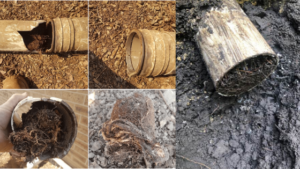As we know many advantages are gained from horticultural. Their farming waste fills have two needs. The first is for the evacuation of overabundance surface and subsurface water. The second is to eliminate the overabundance of solvent salts with the (abundance) water from the depleted soil profile. There are two choices for waste frameworks. The first is a surface seepage framework. A surface channel eliminates the abundance of water from the outside of the land. The second is a subsurface seepage framework. A subsurface seepage framework is utilized to control the water table in the dirt. They can be open channels, which are open trench with an uncovered water table, or line channels which are covered lines. If anybody needs urgent drain clearance then must contact the Blocked Drains Ashford for the best attendance towards the property with experienced handling.

A field waste framework:
This framework is utilized to control the water table and forestall ponding. This segment is the main piece of the waste framework. It is involved in an organization that accumulates abundant water from the land. This is refined with the help of field channels. Supplemental measures to guide water to the channels might be taken.
A primary waste framework:
This piece of the seepage framework brings the water away from the homestead to the outlet point. The water originates from the field waste framework, surface overflow, and groundwater blossom utilizing a primary channel known as a canalized stream. This implies that there was a current stream that was modified to improve the stream.
An outlet:
This is the place where the wastewater is driven out of the zone and released into another waterway (lake, stream, ocean). An outlet will either be gravity-fueled or require a siphoning station. On the off chance that it is gravity controlled, the water levels rise and fall. An outlet will require a siphoning station if the water levels in a waste framework are lower than the degrees of the accepting waterway.
Few advantages of agrarian waste:
The greatest and most significant being the improvement of air circulation inside soils which brings about better yields. This is because of the way that:
- The harvests can root all the more profoundly
- The selection of sorts of harvests that can be planted is extended
- There will be fewer weeds
- Productivity in manure use will be improved
- Denitrification will be decreased
- Grass sods will be better
Extra advantages are not identified with air circulation. They include:
- Simpler admittance to the land
- The more noteworthy bearing limit in the land
- The dirt has better tilth and usefulness
- Culturing tasks can occur throughout a more extended timeframe
- A superior climate for miniature fauna (ex. Nightcrawlers) is made which improves porousness
- Yields can be become before because of expansions in soil temperature
Waste additionally makes it conceivable to restrain soil saltiness. Soil saltiness levels show the measure of salt present in the dirt. On the off chance that there is an excess of salt, plant development will be impeded. To eliminate the overabundance of salts from the dirt, draining is energized. Filtering is the cycle of supplements or salts being eliminated from the dirt with water. Filtering can happen normally or because of the water system and waste frameworks. In some cases, filtering is important to fix land that has been contrarily affected by rural exercises.







